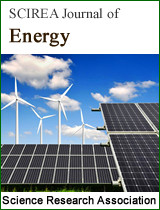THE NEW PRINCIPLE OF TRANSFORMATION HEAT INTO ELECTRICITY
DOI: 10.54647/energy48125 115 Downloads 229832 Views
Author(s)
Abstract
The general scheme of heat-to-electric power conversion in closed thermally inhomogeneous heterogeneous flow with constantly renewable local imbalance is considered. Conversion system comprises high-speed motor-generator rigidly coupled with propulsor. Propulsor has the form of rotating vessel containing liquid phase of working substance. Nozzles are installed on it to discharge liquid into closed volume filled with gas. The jet of working substance leaving the propulsor under the action of high pressure due to centrifugal forces is directed in the opposite direction of rotation of the generator, but its phase composition and other thermodynamic parameters are not determined. The transition of the working substance from the propulsor to the closed volume goes beyond equilibrium thermodynamics. Motion energy of each element of working substance mass leaving the propulsor is supplied to electric power generation.
Keywords
Energy, Entropy, Laws of thermodynamics.
Cite this paper
G.V.Skornyakov,
THE NEW PRINCIPLE OF TRANSFORMATION HEAT INTO ELECTRICITY
, SCIREA Journal of Energy.
Volume 6, Issue 3, June 2021 | PP. 47-53.
10.54647/energy48125
References
| [ 1 ] | Leontovich M. A., Introduction to Thermodynamics. Statistical Physics (In Russian), M., Nauka, 1983. 416 pp. |
| [ 2 ] | Landau L. D. and Lifshits E. M., Statistical Physics (In Russian), Moscow, Nauka, 1964, 568 pp. |
| [ 3 ] | Truesdell C., The Tragicomical History of Thermo- dynamics 1822—1854, N.—Y.; Spring.Verlag, 1982, 339 pp. |
| [ 4 ] | Fermi E., Thermodynamics, London & Glasgow, Blackie & Son Ltd., 1938, 160 pp. |
| [ 5 ] | Albert Einstein: Philosopher-Scientist, Ed. by P.Schlipp,// Evanston, Ill. 1949.. |
| [ 6 ] | Afanas’eva-Ehrenfest T. A.// Zhurn. Prikl. Phys. (In Russian), 1928, vol. 5, parts 3--4, pp. 3–30. |
| [ 7 ] | Skornyakov G.V.//Tech. Phys.,1996, 41,(1),pp.1—11. |
| [ 8 ] | Skornyakov G.V.//International Journal of Energy and Power Engineering, 2019; 8(1):pp 1—3. |

